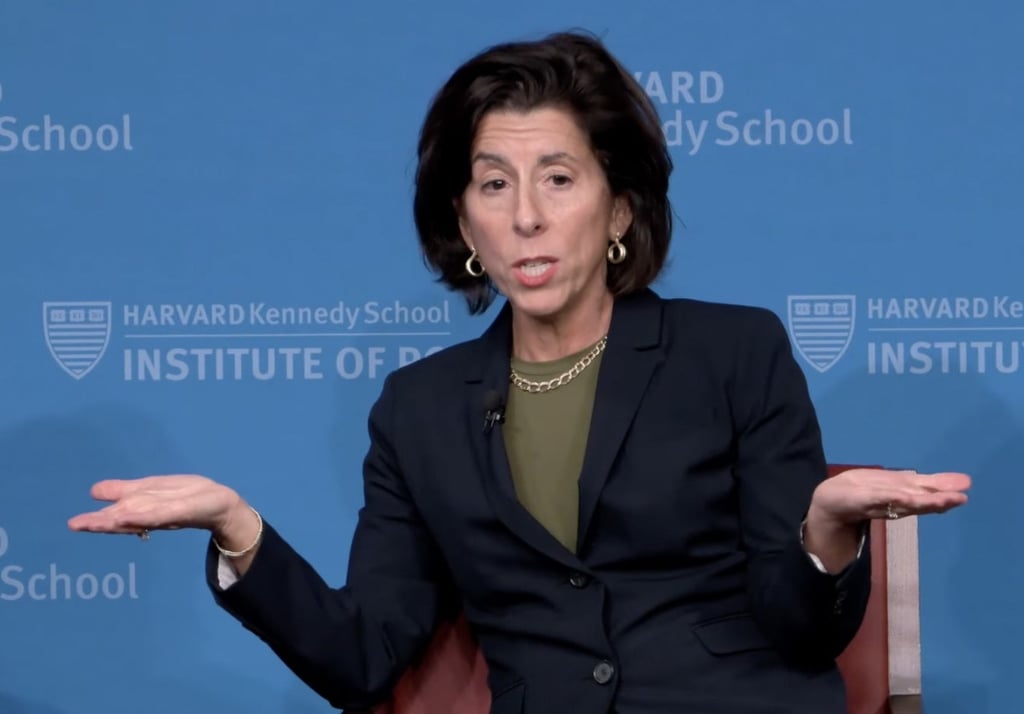Report on the EU Deforestation Regulation (EUDR) and its Implications for Sustainable Development Goals
Introduction: The EUDR’s Role in Advancing Global Sustainability
The European Union Deforestation Regulation (EUDR), adopted in 2023, represents a significant legislative effort to align EU market practices with global environmental objectives. As a key component of the EU Green Deal, the regulation aims to ensure that commodities and derived products consumed within the EU do not contribute to global deforestation and forest degradation. This initiative directly targets the advancement of several Sustainable Development Goals (SDGs), primarily:
- SDG 15 (Life on Land): By seeking to halt biodiversity loss and protect forest ecosystems.
- SDG 13 (Climate Action): By reducing greenhouse gas emissions associated with deforestation.
- SDG 12 (Responsible Consumption and Production): By enforcing sustainable supply chains for goods entering the EU market.
The EUDR’s primary objective is to sever the link between EU consumption of commodities such as palm oil, coffee, leather, and chocolate, and their environmental impact in producer countries. However, its unilateral design has generated considerable debate regarding its global fairness and impact on other SDGs.
Core Mechanisms of the EUDR
Mandatory Due Diligence Obligations
A key innovation of the EUDR is the replacement of voluntary corporate initiatives with legally binding due diligence requirements. This shift compels companies to actively verify and declare that their products are deforestation-free, thereby strengthening accountability in supply chains and promoting the principles of SDG 12.
Enhanced Traceability and Transparency
The regulation introduces stringent traceability measures, requiring companies to provide precise geolocation data for the land plots where commodities were produced. This use of satellite imagery and data submission is designed to prevent producers from obscuring their environmental impact within complex supply chains, fostering a new level of transparency.
Risk-Based Compliance Framework
The EUDR employs a risk-based approach to enforcement, classifying countries as low, standard, or high risk for deforestation. This system allows for a targeted application of due diligence, with stricter scrutiny applied to commodities from high-risk regions. The framework aims to focus regulatory efforts where they are most needed to protect vulnerable ecosystems, in line with SDG 15.
Geopolitical Implications and Challenges to Global Partnerships
Unilateralism vs. SDG 17 (Partnerships for the Goals)
The EUDR’s unilateral nature, while not directly regulating other states, effectively imposes EU standards on global trade partners through market access conditions. Proponents argue this “Brussels effect” will elevate global forest conservation standards. However, this approach is in tension with SDG 17, which calls for global partnerships built on cooperation and mutual accountability. Critics argue that by setting standards without multilateral consensus, the EU undermines collaborative efforts towards sustainability.
Concerns of “Green Colonialism” and Inequality (SDG 10)
Producer countries have raised significant concerns, labeling the regulation’s extraterritorial effects as “regulatory imperialism.” The core criticisms include:
- Infringement on State Sovereignty: The regulation indirectly compels non-EU states to adopt EU-defined sustainability norms, challenging the principle of national sovereignty central to SDG 16 (Peace, Justice and Strong Institutions).
- Externalization of Costs: Critics contend that the EU is externalizing the financial and administrative burden of its environmental agenda onto producers in the Global South, who are often least equipped to absorb these costs. This risks exacerbating global inequalities, directly contradicting SDG 10 (Reduced Inequalities).
Economic and Trade Impacts
Disruption to Trade and Economic Growth (SDG 8)
Affected nations, including Indonesia, Brazil, and Malaysia, have warned that the EUDR functions as a de facto trade barrier that could disrupt supply chains and disproportionately harm small businesses. These economic impacts pose a direct challenge to SDG 8 (Decent Work and Economic Growth) and SDG 1 (No Poverty) by potentially limiting export opportunities and threatening the livelihoods of smallholder farmers in developing economies.
Alignment with International Trade Law
The EUDR’s compatibility with World Trade Organization (WTO) rules, particularly non-discrimination principles, remains a point of contention. The EU is expected to justify the regulation under public policy exceptions for the protection of natural resources. The 2024 WTO ruling on a complaint by Malaysia against EU biofuel policies illustrates this delicate balance; while the panel partially upheld the EU’s environmental objectives, it found that certain criteria constituted unfair discrimination. This highlights the ongoing tension between achieving environmental SDGs and maintaining a fair, rules-based international trading system as envisioned under SDG 16.
Conclusion: Towards a Fairer Path for Global Sustainability
While the EUDR demonstrates a strong commitment to achieving SDG 13 and SDG 15, its unilateral implementation risks undermining other critical goals, particularly SDG 10, SDG 17, and SDG 8. To ensure its environmental objectives are met without worsening global inequality, a more inclusive and cooperative approach is necessary.
Recommendations
- Foster Inclusive Partnerships: In alignment with SDG 17, the EU should actively engage producer countries in dialogue to co-develop implementation frameworks that consider local realities and capacities.
- Provide Technical and Financial Support: To mitigate the negative impacts on SDG 1 and SDG 8, the EU should offer substantial support to smallholders and businesses in producer countries to help them meet the new traceability and due diligence standards.
- Ensure Equitable Implementation: The regulation’s risk-assessment and enforcement mechanisms must be applied transparently and fairly to avoid creating discriminatory trade barriers, thereby upholding the principles of SDG 10 and SDG 16.
Analysis of Sustainable Development Goals in the Article
1. Which SDGs are addressed or connected to the issues highlighted in the article?
-
SDG 15: Life on Land
This goal is central to the article, as the EU Deforestation Regulation (EUDR) directly aims to “halt deforestation” and “halt biodiversity loss,” which are core components of SDG 15. The regulation’s primary objective is to protect and restore terrestrial ecosystems by preventing goods linked to deforestation from entering the EU market.
-
SDG 13: Climate Action
The article explicitly states that the EUDR is “anticipated… [to] reduce greenhouse emissions.” Since deforestation is a major contributor to climate change, the regulation’s efforts to curb it are a direct measure to combat climate change and its impacts, aligning with SDG 13.
-
SDG 12: Responsible Consumption and Production
The EUDR is fundamentally about ensuring sustainable consumption and production patterns. It targets the demand side (EU consumption) to influence the supply side (production of commodities like palm oil and coffee). By imposing mandatory due diligence and traceability, it forces companies to ensure their supply chains are sustainable, which is the essence of SDG 12.
-
SDG 17: Partnerships for the Goals
This goal is addressed through the article’s critique of the EUDR’s implementation. The text highlights the “unilateral” nature of the regulation, which has led to accusations of “regulatory imperialism” and a lack of cooperation. The article’s conclusion, calling for “more inclusive and transparent cooperation with producer countries,” underscores the importance of partnerships for achieving global sustainability, a key principle of SDG 17. The discussion of the regulation’s alignment with World Trade Organization (WTO) rules also relates to strengthening the global trading system as part of this goal.
-
SDG 10: Reduced Inequalities
The article raises concerns that the EUDR “risks worsening inequality.” It points out that the regulation could externalize environmental responsibility and shift “the costs of sustainability onto producers who are least equipped to bear them,” particularly in the Global South. The mention of “disproportionate costs on small businesses” in producer countries like Indonesia and Brazil directly connects the regulation’s impact to the potential for increasing inequality between and within countries.
2. What specific targets under those SDGs can be identified based on the article’s content?
-
SDG 15: Life on Land
- Target 15.2: “By 2020, promote the implementation of sustainable management of all types of forests, halt deforestation, restore degraded forests and substantially increase afforestation and reforestation globally.” The EUDR’s primary objective to “prevent EU-traded goods from driving deforestation” is a direct attempt to implement this target.
- Target 15.5: “Take urgent and significant action to reduce the degradation of natural habitats, halt the loss of biodiversity and, by 2020, protect and prevent the extinction of threatened species.” The article mentions that the EUDR is expected to “halt biodiversity loss,” aligning with this target.
-
SDG 13: Climate Action
- Target 13.2: “Integrate climate change measures into national policies, strategies and planning.” The EUDR is described as a “central component of the EU Green Deal” and a regulation designed to “reduce greenhouse emissions,” showing the integration of climate action into EU-level policy and regulation.
-
SDG 12: Responsible Consumption and Production
- Target 12.2: “By 2030, achieve the sustainable management and efficient use of natural resources.” The regulation’s focus on ensuring commodities are “deforestation-free” is a mechanism for the sustainable management of forest resources.
- Target 12.8: “By 2030, ensure that people everywhere have the relevant information and awareness for sustainable development and lifestyles in harmony with nature.” The EUDR’s requirement for traceability through “satellite imagery and geolocation data” aims to provide transparent information about the sustainability of products.
-
SDG 17: Partnerships for the Goals
- Target 17.10: “Promote a universal, rules-based, open, non-discriminatory and equitable multilateral trading system under the World Trade Organization…” The article discusses at length whether the EUDR will “fully align with international trade rules, particularly the non-discrimination principles,” making this target highly relevant to the debate.
- Target 17.16: “Enhance the global partnership for sustainable development…” The article’s criticism of the EU’s “unilateral approach” and its call for “inclusive and transparent cooperation with producer countries” directly invoke the principles of this target.
-
SDG 10: Reduced Inequalities
- Target 10.a: “Implement the principle of special and differential treatment for developing countries… in accordance with World Trade Organization agreements.” The concern that the EUDR “discriminates against producer states” and imposes “disproportionate costs on small businesses” in developing economies directly relates to the failure to apply this principle.
3. Are there any indicators mentioned or implied in the article that can be used to measure progress towards the identified targets?
-
Explicit Indicators
The article explicitly mentions a key data collection requirement that serves as a direct indicator for monitoring compliance with deforestation-free commitments:
- Geolocation and satellite data: The article states, “The EUDR requires the collection and submission of satellite imagery and geolocation data on the exact land plots where commodities are produced.” This data can be used to measure the area of land used for production that remains free of deforestation, directly tracking progress towards Target 15.2.
-
Implied Indicators
The article’s discussion implies several other indicators that could be used to measure the effects of the EUDR:
- Greenhouse gas emissions reduction: Since the EUDR is “anticipated… [to] reduce greenhouse emissions,” a relevant indicator would be the measured reduction in emissions linked to land-use change for commodities consumed in the EU.
- Volume of “deforestation-free” products: The percentage or total volume of targeted commodities (palm oil, coffee, leather, etc.) placed on the EU market that are verified as deforestation-free would be a key indicator of the regulation’s effectiveness.
- Trade volume and patterns: The article notes that affected countries worry the EUDR will “restrict exports.” An indicator of its economic impact (and potential for creating inequality) would be the change in trade volumes of targeted commodities between the EU and producer countries like Indonesia, Brazil, and Malaysia.
- Number of trade disputes: The legal challenges and “complaint[s]” mentioned in the article suggest that the number of formal disputes filed at the WTO regarding the EUDR could serve as an indicator of its conflict with international trade rules (Target 17.10).
4. Summary Table of SDGs, Targets, and Indicators
| SDGs | Targets | Indicators |
|---|---|---|
| SDG 15: Life on Land |
|
|
| SDG 13: Climate Action |
|
|
| SDG 12: Responsible Consumption and Production |
|
|
| SDG 17: Partnerships for the Goals |
|
|
| SDG 10: Reduced Inequalities |
|
|
Source: leidenlawblog.nl







